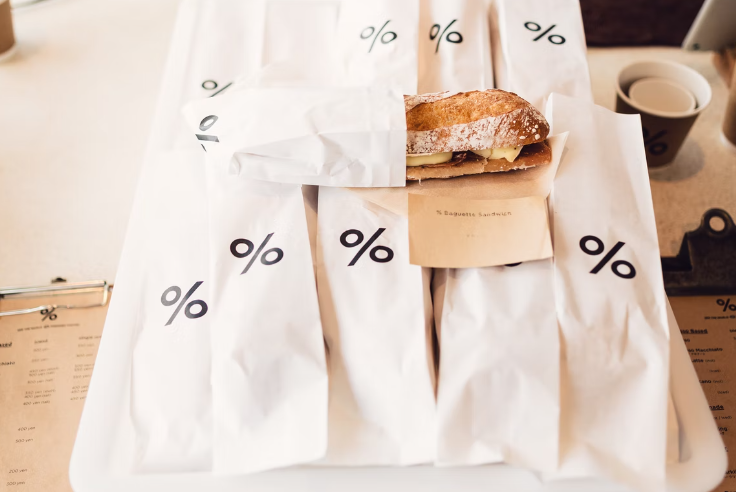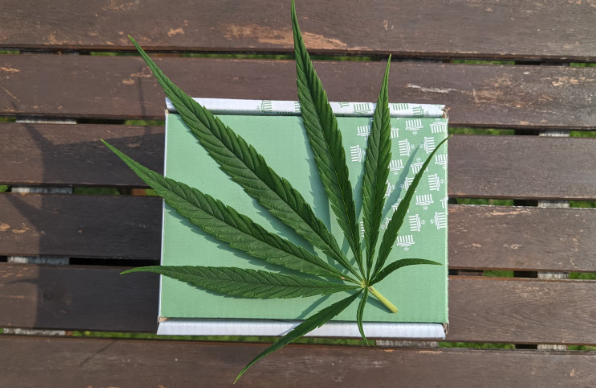Introduction
The food packaging market is booming with the increasing demand for packaged foods. The reasons behind this trend include:
1. accelerated urbanization leads to higher consumption levels of all types.
2. Consumers buy more ready-made meals and takeaways than ever before, leading them towards purchasing items wrapped in plastic or other kinds of containers that can be reclosed after use;
3. increased consumer interest not only in fresh produce but also processed options such as canned tomatoes and phonetically sounding "cookies" at cinema restaurants across America - these changes have stimulated sales even further because shoppers feel compelled to make.

Food packaging market Nowadays
The global food packaging market size is expected to reach $erible 478.18 billion by 2028, with growth coming mainly from emerging economies such as India and China.
On the other hand, developing new products has never stopped in order to meet customer needs.
The global food packaging market size is projected to be USD 356.36 billion in 2023, growing at a CAGR of 5.5% during the forecast period.
The packaged food industry has been growing at a rapid rate due to an increase in demand from consumers.
The products offer extended shelf life, high barrier performance, and safety which contribute to this success story of the market worldwide.
Factors like convenience for usage along with materials that are highly resistant to contamination can be considered some major forces driving growth within this sector.
A significant part -if not all of these advancements have come about because people want healthier options when they grocery shop or eat out.

In addition, factors such as increasing population and rising disposable income are also positively influencing the market.
The most important factor in this evolution is convenience-driven packaging which has come about due to an increase in single-serve sizes or packages designed for easy opening with a minimal number of operations required on its part (such as Plastic).
In turn, these changes have led consumers away from larger package options towards those offering more portability while still providing adequate protection against spoilage transmission diseases.
Packaging has become more and more restricted as a result of the many factors that affect it.
Among those, materials play an important role in determining its quality,
In 2027 when this market will reach 466 billion dollars with 6% growth each year.
With the increase of changing lifestyles, people have turned to processed or packaged foods because they can be stored for a long time and used easily.
A ban on plastic bags has also led many shoppers back to using groceries baskets instead!
As more individuals make this transition from rural areas into major cities across America; it's expected that market growth will continue apace - especially with all those new consumers coming online each day.
COVID-19 Analysis and Prognosis
The COVID-19 global pandemic has had a significant effect on people's lives.
The economic crisis and health problems are often dealt with together, which makes it even more difficult for those who must deal with both issues at once - especially during lock-up periods when businesses close down due to safety concerns or because they cannot afford lost wages if their employees do not come back after being laid off. This leads many countries into recessionary trends that can last years without end!
The global epidemic has had a significant effect on the market, but it is expected that before this quarter ends companies will have recovery plans in place and be able to reopen.
Competitive landscape
The most prominent main players in the food packaging market in the global market are as follows:
Amcor Limited (Australia)
Coveris Holdings S.A. (Luxembourg)
The Smurfit Kappa Group plc (Republic of Ireland)
- du Pont de Nemours and Company (United States)
Mondi Plc (Austria)
Bemis Company, Inc. (United States)
International Paper Company (United States)
- Smith Company (UK.)
Silgan Holdings Inc. (United States)
Rock-Tenn Company (United States)
These most famous market participants establish new units in potential markets through cooperation, mergers and acquisitions and cooperation, new product development, and development in the production process, thereby using various strategies and policies to expand their customer base.

The market is dynamic
Driver
The global packaged food market is a dynamic and ever-changing industry.
Due to changes such as trends in professionalism, material advancement of processed foods (such as reduced fat), and adopting strategies that contribute towards growth; there has been an increase in demand for this specific type within our society today - leading the way forward with progressiveness.
Opportunity
The global food packaging market is growing at an alarming rate due to various growth opportunities in the industry.
In addition, antibacterial technology that helps improve the shelf life of perishable foods and fierce competition among major players in emerging countries also contribute significantly towards its high forecasted numbers over a decade from now!

Constraint
The global market for food packaging has been growing rapidly, but certain factors limit its growth.
For example, high raw material costs and a non-biodegradable material used in most packages hold back economic progress overall by hurting manufacturing industries that produce these goods or offer them to customers on behalf of others (such as restaurants).
This means people who want vegetables wrapped before they go into their fridge may not be able to find any at local grocery stores because those manufacturers can't afford the cost increase from utilizing more expensive materials like plastics instead fiberglass which would allow us all an opportunity.
Value chain analysis
The market for packaged foods is growing at an alarming rate because it can extend the shelf life of food and protect them from external dust.
Furthermore, this leads to improved hygiene factors in those who consume these types of Packaged products also contain all important information about manufacturing dates as well as ingredient lists which helps raise awareness of what you eat.
Market segmentation
The food packaging market in the global market has been divided according to applications and types.
Food packaging market by materials
Generally, popular materials for food packaging products today are mainly:
- Paper and board
- Rigid and flexible plastic
- Glass
- Metal
1. Paper and board on the current food packaging market
The paper-based packaging products are taking over as the most popular way to package food. And it's not surprising, considering how biodegradable they can be!
A recent study found that these materials account for 31% of total market revenue - which could mean big things growth-wise in this industry soon enough too.
2. Rigid and flexible plastics in the current food packaging market
In recent years, plastic packaging products have been playing a key role in the industry.
Paper-based materials are still on top but these new eco-friendly options provide benefits such as excellent sealing capacity and waterproofing ability which make them popular among consumers until now with their low prices make it hard for other competitors to compete against them even though they may be more expensive upfront.
3. Glass on the current food packaging market
The reason why glass is so popular as a packaging material for food preservation and direct contact with the product arises from its high performance in terms of fresh-keeping ability combined with being non-corrosive.
This makes it one preference among many others that can be seen almost everywhere around us; even on our shelves at supermarkets!
Therefore, an estimation of USD 43.5 billion by 2027 for the glass material segment.
4. Metal on the current food packaging market
Metal packaging for food? It might look weird at first glance. But think twice, you will probably find them common and familiar.
Usually, metal packages are used to hold canned goods like meat or fish; however, they can also be found on a variety of other products in stores around the world including fruits!
They offer an easy way out when we don't want our stomachs feeling hungry while waiting in line at Whole Foods Market (or wherever) because let’s face it--sometimes life gets busy enough that cooking some dinner isn't possible.
The metal packaging industry is a growing segment of the market, but it's not catching up as quickly as other segments. In conclusion: paper packaging takes first place!
Applications
In the packaging industry, it's easy to see how various types of packages are used for a variety of purposes. From food and beverage products all way down through industrial goods like machinery or chemicals.
- Bakery & Confectionery
- Dairy products
- Fruits & Vegetables
- Meat & seafood
1. Bakery and Confectionery
The storage life of a bakery or confectionery product is determined by two factors: moisture content and exposure to light.
Moisture-proof materials with high levels of performance will keep your goods fresh longer, but at the expense of taste quality - you can't have both!
Flexible packaging has excellent shelf lives when compared to paper products like boxes; it also allows for lower prices because they're lightweight (which means more profits).
2. Dairy products
The demand for dairy products is constant and it fuels the growth of this industry.
Packaging designs have become more appealing to customers, which means you might pick up a bottle or carton in order for their attractive look! All these deeds contribute towards market expansion with packaging solutions from companies like ours that provide quality goods at affordable prices.
3. Fruits and vegetables
You know that you're one of the contributors to this growing market share for fruits and vegetable packaging.
You want your food preserved in a place with protection rather than being exposed for hours on end outside, so it's important to get them packed into clean bags made from eco-friendly materials like glass or plastic.
4. Meat and seafood
The increasing demand for meat and seafood has led to the growth of packaging companies that produce these products.
As well as dairy products, you probably need them every day unless you're vegetarian or vegan--and then there are all those calcium requirements!
Regional diversity
- Asia-Pacific
- North America
- Europe
1. The food packaging market in Asia-Pacific
With a market share of 50%, Asia Pacific is expected to be the largest economy in 2022.
This can largely be attributed due its high population and growing middle class that has more purchasing power today than ever before with increased economic opportunity at their fingertips,
which has led them towards food packaging products such as plastic containers or trays made from recycled materials like paper straws rather than conventional options like metal cans used for storing oil alongside other items required by home cooks who want convenience but also environmental friendliness when possible.
2. The food packaging market in North America
North America's packaging market is booming because of the strong retail industry and growing food consumption.
3. The food packaging market in Europe
The European food packaging market is expected to show positive growth in the near future.
Though it has already reached a saturation point at home, the export business will propel an additional increase for this industry's output because of their free-trade policy that allows them access to other countries' markets without any barriers or limitations.
Paper food packaging - the trend
Paper food packaging is not only eco-friendly but also provides benefits that make it a favorable option over other types.
These include being friendlier to the environment, and less costly in terms of production costs and disposal fees for instance; plus you can print as many colors on them!
1. Paper packaging is eco-friendly
The abuse of plastics has continued to damage our environment for far too long. You can easily find evidence in just a bit of time that this continues today, as well!
Awareness about environmental protection has become increasingly popular in society nowadays which led consumers to look beyond just sustainable products but also ways how they could help protect Earth’s Resources by reducing their consumption levels when possible or recycling any wasted resources like oil spillages from ships at sea (which happens more often than you may think).
2. Paper packaging is multi-functional
Cardboard boxes are an excellent option for packaging your product, especially if you want to reduce waste.
With the rise in popularity of plastic bags and bottles everywhere from grocery stores to eco-friendly shops, this may be one way that people will start using again!
The environment is loved by these guys because they are 100% recyclable. The leftover pieces of paper after the main material's missions can continue on in this cycle too, making them perfect for recycling into different products like fiber-board or even bags.
Paper-based containers are everywhere you look, and it’s not just for coffee! You can find paper cups at your favorite restaurant or cafe today.
And with all these new developments coming out on how to keep food fresh – from storing them in breathable fabrics like nylon instead of plastics--paper may become even more popular as a sustainable alternative over time since its material properties allow airflow which helps maintain shelf life without compromising taste quality too much either.
3. Paper packaging is lighter
With the contribution of advanced technology, paper packaging today can handle more situations than it used to which enables a paper containerized cargo shipments that are lighter in weight and offer better protection for your goods.
Therefore you will have less demand on loading additional containers if shipping is done properly with just one large box instead- saving both time as well money from having an unnecessary expense!
The paper packaging solution is here to stay!
Conclusion
The global packaging market is booming, and this means that there are more chances for companies involved in paper or eco-friendly products.
Paper manufacturers will continue their efforts to make the best use of resources while still producing quality products at an affordable price point - it's what makes them apart from others!
Ecopackers is committed to the environment and we always do our best.
Paper food packaging in Ecopackers
Ecopackers is a trusted name in paper food packaging. We provide creative designs and state-of-the-art technology to ensure our customer's satisfaction with their products, which are used by many different industries from beverages & foods all the way down through healthcare or pet care!